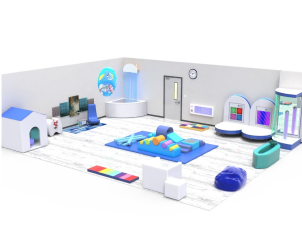This post was originally posted on 01/5/2008. It was updated for accuracy and comprehensiveness on 07/15/2021
In working with children with various forms of sensory processing disorder (SPD), I've come across a common theme: constipation.
Upon identifying concerns, it is important to consult with your pediatrician and/or pediatric gastroenterologist to confirm that the problem is not related to any other underlying medical condition(s).
In cases of constipation, there can be multiple, often coexisting causes. Many children with SPD have poor eating habits as a result of oral sensitivity and eat only 'white foods' or similar low fiber foods. In addition, these kids are often scared to relieve themselves and withhold due (but not limited) to:
- Increased physical awareness of bowel movements and related discomfort due to super sensitive tactile systems
- Fear of falling into the toilet due to poor balance
- Fear of the noises in the bathroom, such as the toilet flushing or pipe noises
- A desire to control the environment.
Some children also present with hypotonia (low tone) and have difficulty digesting food in an efficient manner.
Constipation is terribly uncomfortable. Think of the way you feel when you are constipated. Words such as bloated, moody, sick, nauseous, sluggish and crampy may come to mind. Children with SPD who are constipated often complain of stomach pain, can become even more emotionally sensitive and are often explosive.
Dealing with food sensitivities and related constipation can be difficult, but real progress can be made with effort and dedication. The following is a list of strategies I have found to be helpful.
Toileting
- Decorate the bathroom with your child. Hang up pictures, place favorite books or stuffed animals nearby, add music. We all enjoy our own bathroom comforts and reading materials, so try to create an environment that is as appealing to your child as possible.
- Make sure the child is comfortable and posturally stable on the toilet by placing a stool under his/her feet and/or using a toilet insert.
- Have your child choose and decorate the plastic exterior of the toilet insert.
- Have your child sit on the toilet for 10 minutes, at least twice a day, to get accustomed to the experience.
- Talk about their toileting schedule together, including what they should expect, like how long they will sit on the toilet. Prepare your child with your expectations.
- Explain the natural physical consequences of withholding (ie: stomach pain).
- Include the child in the process. Ask him/her for ideas to increase cooperation and success
- Praise, praise, praise and positive reinforcement! Start with praise for behaviors such as relaxed sitting on the toilet and/or tasting healthy new foods. Chart their progress and reward.
- Have your child regularly look at and evaluate the quality of his/her stool (ideal stool should be medium brown, the color of plain cardboard with the consistency of toothpaste, approximately 4 to 8 inches long. There should be little gas or odor).
Eating
- The importance of eating meals together as a family cannot be emphasized enough. Seeing others eat a variety of foods in a relaxed setting will, over time, motivate kids to participate.
- Start by smelling and tasting a small bit of food. Most times, repeated exposure to an undesired or new food is required before a 'picky' child is willing to eat it.
- Use appealing adjectives for healthy food such as sweet, tasty, delicious, fragrant, yummy, beautiful, crunchy, fantastic, and savory. Studies show that this increases the desire for and perceived tastiness of the food.
- Include your kids in food and menu preparation. Teach them about the health benefits of good food.
- Increase your child's daily fiber and water intake by using the strategies listed above.
- Talk with your pediatrician about giving your child a stool softener such as Miralax.
While constipation might seem like an unmanageable hurdle, there are numerous resources to help you and your child overcome it. Identifying the underlying cause will help determine the right steps to take.
Have you or your child experienced constipation correlated to a sensory processing disorder? Let us know in the comments!
Create a safe environment for your child to regulate before and after going to the bathroom with sensory furniture and seating options.





















Comments